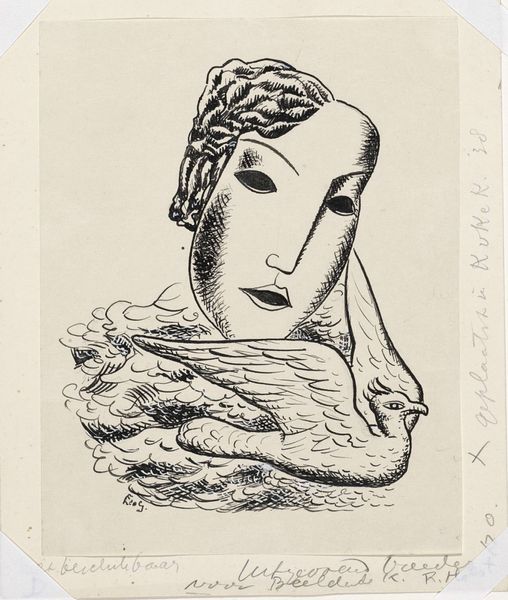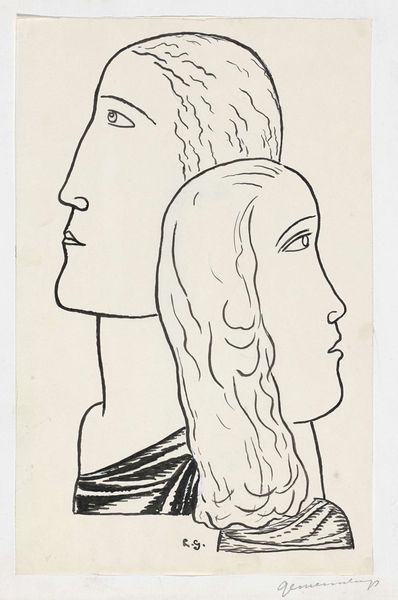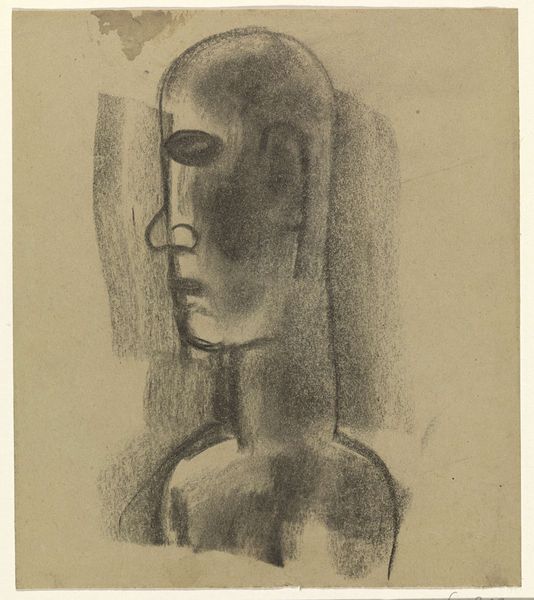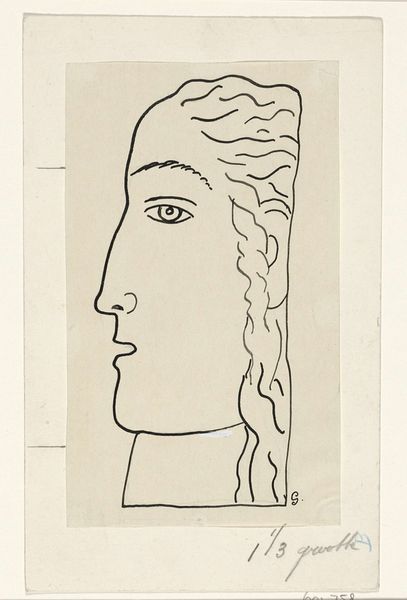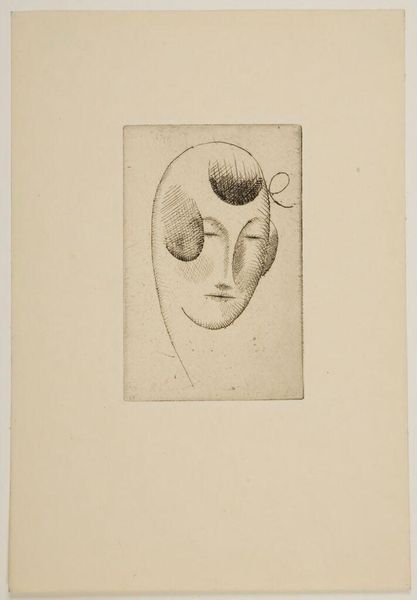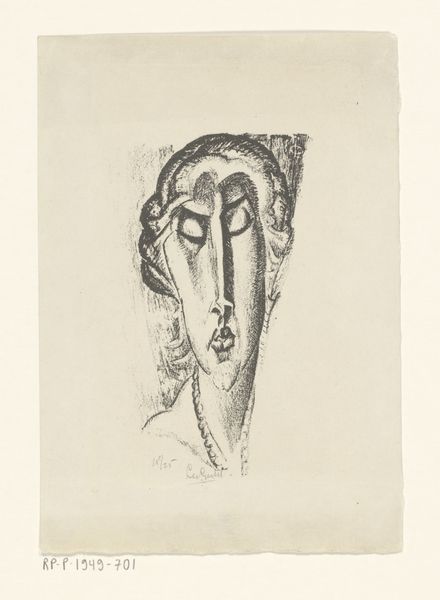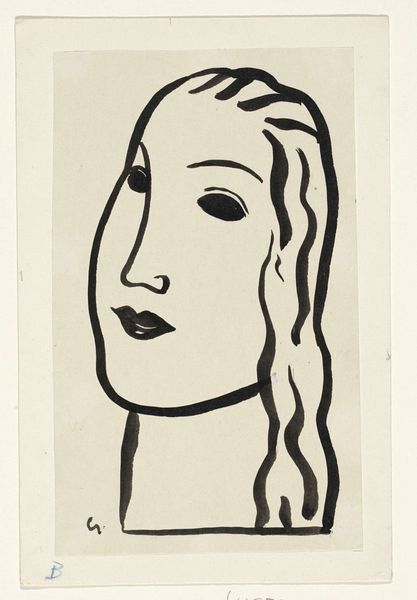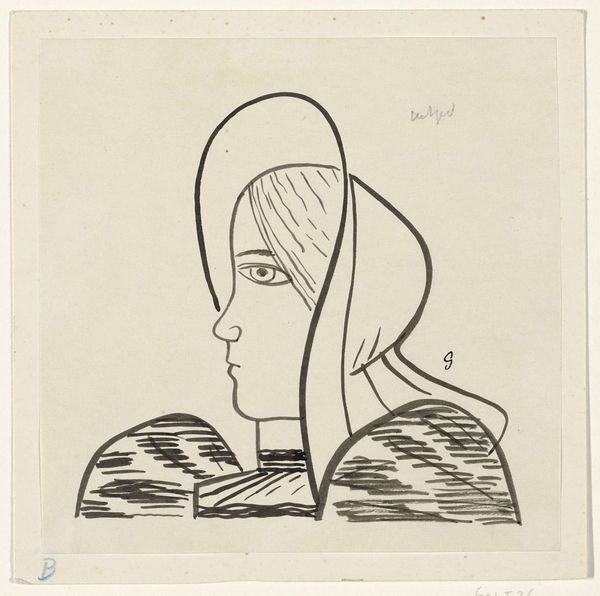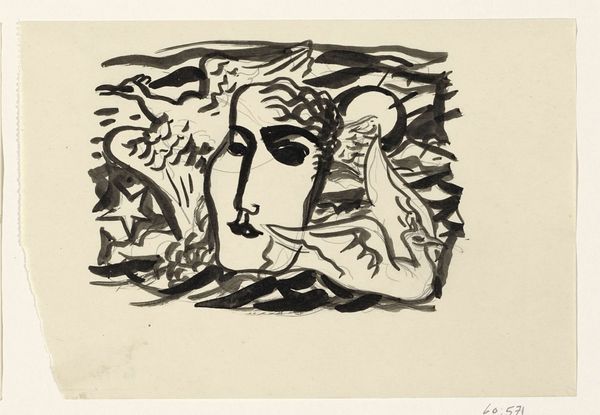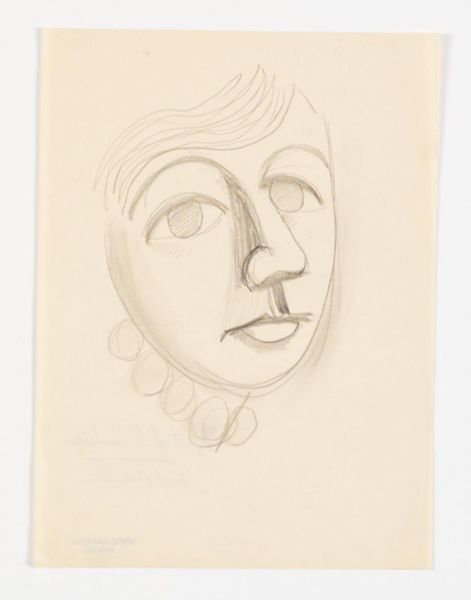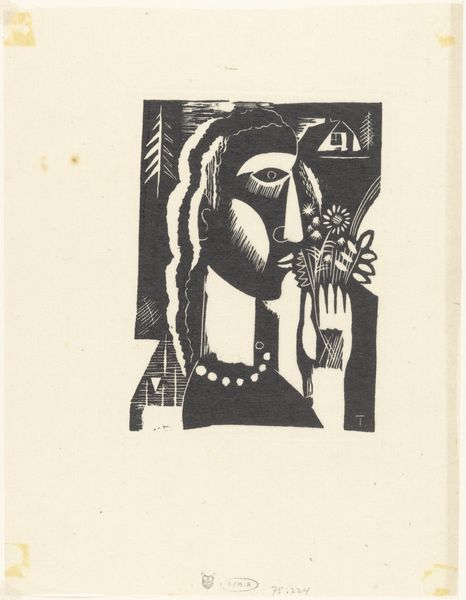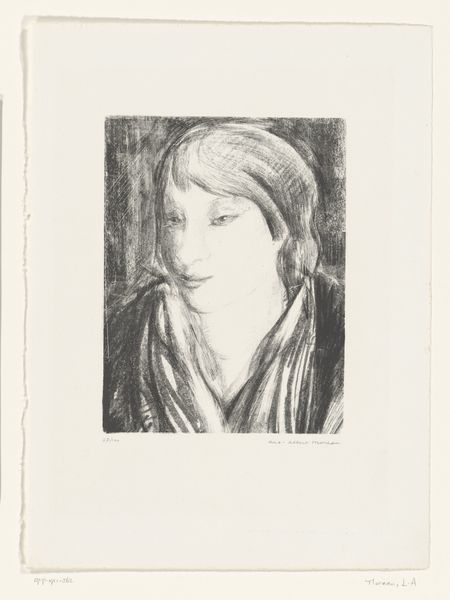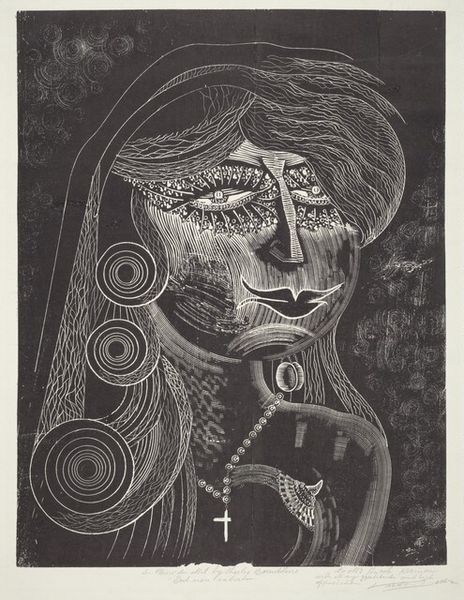
Dimensions: height 136 mm, width 92 mm
Copyright: Rijks Museum: Open Domain
Curator: This stark, somewhat severe profile holds my attention. What's your take? Editor: The drawing, done in ink, seems almost unfinished, but in its rawness lies a certain expressive power. Curator: You’ve picked up on that perfectly. The piece is "Vrouwenhoofd," or "Woman's Head," by Leo Gestel, created between 1939 and 1941. What strikes me is how the line, particularly the dense hatching across the face and what little we see of her hair, conveys both form and an almost sculptural texture. Editor: It feels both modern and primal, the economy of the lines belying the depth of form achieved. I'm curious, what role did ink and paper play in Gestel's practice at this time? Was this medium a practical choice during wartime, perhaps related to the scarcity of materials? Curator: Exactly, wartime austerity certainly played a part. The swiftness and relative cheapness of ink on paper were likely important factors. Gestel probably wouldn't have had easy access to oils and canvas, plus there's the element of him making his art more transportable. Think resistance art too, as portability of production rises exponentially while the art itself can travel between social circles with similar ease. Editor: So, this "Woman's Head" is not simply a study in form, it is equally an object created as a product of very material restraints and socio-political actions. This reading reframes Gestel's formal choices to consider its material history, transforming its potential meanings. What do you think accounts for his unique stylistic choice? Curator: I see the Expressionist roots, though subdued and simplified. There’s also perhaps a nod to Cubism in the way the planes of the face are suggested, though the lines never quite resolve into a fully three-dimensional form. The composition also creates a fascinating sense of introspection, a somber quality which would seem quite apt for the war time context within which it was created. Editor: True, and in turn, viewing through the lens of the economic conditions perhaps suggests something equally symbolic; a literal scarcity etched onto her features as they came to be created through minimal medium accessibility. Curator: Absolutely. It really allows us to consider Gestel's process itself as embedded within wartime society. Editor: Indeed. By considering both formal qualities and the art's means of production, it reveals powerful dimensions of human creativity during an otherwise devastating period.
Comments
No comments
Be the first to comment and join the conversation on the ultimate creative platform.
